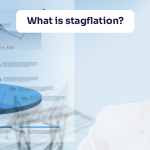China imposed strict export controls on rare earth magnets in early 2025, causing global supply chain disruptions and driving up prices, but began easing these restrictions for India and other countries in August after diplomatic negotiations.
As a result, India planned to launch a ₹3,500–5,000 crore ($404–577 million) scheme aimed at boosting domestic production of rare earth minerals and the permanent magnets derived from them. China’s recent restrictions on exports of rare earth materials have disrupted global supply chains, especially in the automotive and technology sectors.
As a result, Indian stocks dealing in rare earth magnets such as Hindustan Zinc, GMDC, and NLC India were in focus.
In April 2025, China introduced new export controls on seven rare earth elements and related magnets, requiring exporters to obtain government licenses and submit strict documentation, potentially delaying shipments for months.
Here are the restrictions and quotas made for rare earth metals:
Later on, things changed. In the months of July and August, a diplomatic intervention led China to ease certain export restrictions, with magnet exports rebounding to a six-month high and targeted easing for India following high-level talks.
Here is detailed information about three key Indian stocks actively engaged or investing in rare earth magnets and related minerals:
If you’re interested in other companies exploring rare earth opportunities in India, we’ve covered them separately in our article on Top Rare Earth Stocks in India
Sector: Mining and mineral processing
GMDC has embarked on an ambitious Rare Earth Element (REE) exploration project aimed at positioning India as a leading player in this strategic sector. The initiative is defined to create a REE value chain – from mining and extraction to end-product manufacturing – thereby strengthening both the country’s economic prospects and its strategic self-reliance.
The company aims to spearhead India’s Rare Earth Supply Chain Development with Ambadongar Project. The Ambadongar deposit, located in the Chota Udepur district of Gujarat, is one of the largest known sources of REEs globally. These critical minerals are essential to a wide range of clean energy technologies, including electric vehicles (EVs) and wind turbines. Through this initiative, GMDC aims to establish a complete supply chain, from extraction to processing and manufacturing, positioning Gujarat as a global leader in rare earth processing.
The company has set a target of producing 12,000 tonnes of rare earth oxides (REO) annually, targeted to commence by FY2028.
GMDC has allocated ₹3,000–4,000 crore for critical mineral projects. The company aims to increase revenue share from non-lignite minerals to ~50% in the medium term, compared to less than 15% currently.
India’s second-largest lignite producer, GMDC supplies mineral resources to industries including textiles, chemicals, ceramics, and captive power.
The company is recognized as a leading miner of bauxite, fluorspar, manganese, silica sand, limestone, and other minerals, with a diversified portfolio across thermal and renewable energy projects.
Sector: Mining and metals
The only private company in India to win a monazite mining block (monazite contains neodymium, key for rare earth magnets) in Uttar Pradesh government auctions. Actively diversifying into rare earths, lithium, cobalt, copper, and other critical minerals.
Among the largest producers of zinc, silver, and lead in the world, Hindustan Zinc Ltd is evolving into a multi-metal enterprise including rare earths.
Kickstarting rare earth production will require several years of exploration and mining to assess and develop reserves; the full production cycle may take up to 5 years.
The monazite block acquired is a land-based, non-radioactive deposit, different from India’s typical bit-sand monazite, adding strategic value for domestic neodymium magnet supply.
HINDZINC is targeting partnerships for AI- and drone-based exploration and has floated international tenders to leverage expertise from Australia, South Africa, Chile, and China.
Sector: Mining (lignite, coal), power generation, critical minerals.
NLC India is exploring overseas sourcing of rare earth elements, prompted by recent Chinese export restrictions. The company is in discussions for lithium blocks in Mali and copper-cobalt mines in Congo, as well as ramping up domestic critical mineral mining in Chhattisgarh to produce one million metric tonnes in five years.
The company is still in the preliminary phase for rare earth supply, with domestic and overseas projects pending due diligence and government approvals.
India holds the world’s fifth-largest rare-earth reserves (6.9 million metric tonnes), it currently lacks any indigenous magnet manufacturing capacity and depends heavily on imports, primarily from China. In FY25, India imported 53,748 metric tonnes of rare earth magnets, according to government data.
The GMDC has embarked on an ambitious Rare Earth Element (REE) exploration with a target of producing 12,000 tonnes of rare earth oxides (REO) annually.
India’s drive to develop a rare earth magnet ecosystem signals a strategic shift toward self-reliance in critical minerals, with implications for high-tech manufacturing, clean energy, EVs, electronics, and defence. For investors, this evolving sector presents opportunities across refined materials and end-use applications, though success will depend on execution, policy clarity, and timely revenue translation.

Revisiting the Gold-Silver Ratio Amid Silver's Outperformance
4 min Read Dec 22, 2025
Midcaps: Sweet Spot or Danger Zone? | What HSBC MF’s Cheenu Gupta Thinks | Ventura Spotlight
4 min Read Dec 17, 2025
Understanding Option Pin risk near expiry
4 min Read Dec 12, 2025
EPS in the Stock Market
4 min Read Dec 12, 2025
What is stagflation?
4 min Read Dec 10, 2025